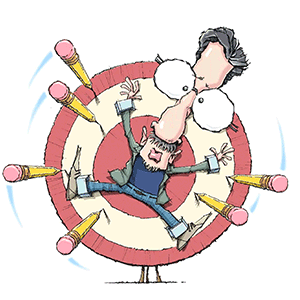Current News
/ArcaMax

EU, US reach deal to avoid Trump tariff hike before deadline
The U.S. and European Union agreed to a deal that will see the bloc face 15% tariffs on most of its exports, including automobiles, staving off a trade war that could have delivered a hammer blow to the global economy.
The pact comes less than a week before a Friday deadline for President Donald Trump’s higher tariffs to take effect. The ...Read more

Tom Lehrer, Harvard's satiric, melodic mathematician, dies at 97
Tom Lehrer, the Harvard-educated mathematician whose brief side gig as one of America’s favorite satirical composers captured in tune some of the anxieties and absurdities of the 1950s and 1960s, has died, according to the New York Times. He was 97.
Lehrer died on Saturday at his home in Cambridge, Massachusetts, the Times said, citing a ...Read more

'The pain is just beginning': Atlanta rallygoers blast federal budget cuts
A protest Saturday in Atlanta was one of dozens in the state and nationwide to target the “big, beautiful bill” passed earlier this month by Congress and signed by President Donald Trump.
Attendees and speakers during the Families First demonstration at Impact Church on Sylvan Road criticized the law. They said it harmed working families ...Read more

As DeSantis calls for property tax cuts, 11 Central Florida governments propose hikes
While state leaders seek to stoke a tax revolt, at least 11 Central Florida cities and counties are signaling they may increase the rate they levy on property owners.
They cite a host of reasons, including the need to pay higher police and fire salaries, increased costs of insurance and construction materials, and the expense of unfunded ...Read more

NC universities enroll 7,000 Indian students. Visa delays may threaten that
With the fall semester starting next month, Indian students are struggling to get visas to study in the United States, a group of U.S. representatives — 14 Democrats and one Republican — told U.S. Secretary of State Marco Rubio in a letter Thursday.
Rep. Deborah Ross, a Democrat from Raleigh, was among the signees.
“As Members of ...Read more

EU, US reach deal to avoid trump tariff hike before deadline
The U.S. and European Union agreed to a deal that will see the bloc face 15% tariffs on most of its exports, including automobiles, staving off a trade war that could have delivered a hammer blow to the global economy.
The pact comes less than a week before a Friday deadline for President Donald Trump’s higher tariffs to take effect. The ...Read more

Israel eases Gaza aid curbs, hoping to defuse hunger outcry
Israel increased aid distribution to Gaza over the weekend in an effort to defuse a growing international outcry over hunger convulsing the shattered Palestinian enclave.
The relief came after ceasefire talks faltered last week. Israel and the U.S. accused Hamas of stonewalling and hinted that a further escalation in the more than 21-month-old ...Read more

Thai, Cambodian leaders set for peace talks nudged by Trump
Thai and Cambodian leaders are set to hold talks on Monday in a bid to end the deadliest clash between the two Southeast Asian nations in over a decade, a peace initiative driven by U.S. President Donald Trump, who used the threat of tariffs to press for a ceasefire.
Thailand’s Acting Prime Minister Phumtham Wechayachai and Cambodian Prime ...Read more

Colorado wildfires: 2 new wildfires spark in southwestern state, force evacuations
Two wildfires that sparked Saturday in southwestern Colorado have forced several communities across La Plata County to evacuate, according to fire officials.
The Elkhorn fire, which started as a structure fire at about 5 p.m. Saturday and spread into the wildland, is burning on 145 acres with no containment, Operations Chief Nick Collard said ...Read more

When is a sunburn cause for concern?
Jul. 27—Sunburns are common — about a third of Americans get at least one each year — and are, most of the time, mild or treatable. But some burns are more severe than others.
More than 33,000 sunburns requiring emergency room consultation are reported each year, according to the National Cancer Institute.
Here's what to know and when to...Read more
Traverse City, Mich., hospital releases update on medical conditions of Walmart stabbing victims
Four of the 11 victims of a Saturday afternoon mass stabbing inside a Walmart store near Traverse City, Michigan, were in serious condition Sunday morning, while seven survivors of the attack were upgraded to fair condition by doctors at Munson Medical Center.
A 42-year-old male suspect is in police custody after allegedly stabbing 11 people in...Read more

Trump, Von Der Leyen see 50-50 odds of reaching trade pact
President Donald Trump expressed hope he could resolve differences with European Commission President Ursula von der Leyen over their trading relationship ahead of a Friday deadline, but suggested pharmaceuticals may not be addressed in a deal.
Trump on Sunday reiterated his view that the chances are “probably 50-50 of making a deal” while...Read more

Trump and Von Der Leyen to meet with trade deal in balance
European Commission President Ursula von der Leyen will meet President Donald Trump on Sunday in a bid to reach a trade agreement ahead of Friday’s deadline, at which point 30% tariffs on the bloc’s exports to the U.S. are otherwise due to kick in.
The stakes for the talks, scheduled for 4:30 p.m. local time at Trump’s golf resort in ...Read more

Israel eases Gaza aid curbs, hoping to defuse hunger outcry
Israel rolled back curbs on aid distribution to Gaza over the weekend in an effort to defuse a growing international outcry over hunger convulsing the shattered Palestinian enclave.
The Israel Defense Forces on Sunday suspended some military operations against Hamas to facilitate the movement of U.N. relief convoys, and restored electricity ...Read more

Thailand, Cambodia set for talks on conflict after Trump's push
Thailand and Cambodia are set to hold talks Monday to discuss an end to their deadly border clashes after U.S. President Donald Trump warned Washington wouldn’t make a trade deal with either country while the conflict continued.
Thailand’s Acting Prime Minister Phumtham Wechayachai and Cambodian Prime Minister Hun Manet are scheduled to ...Read more

Serious liver disease is up among heavy drinkers, even without more drinking
LOS ANGELES — Serious liver disease is becoming more common among Americans who drink heavily, according to a new study from Keck Medicine of USC.
It's not that more people are partying with alcohol. And it's not that the drinkers are having more drinks. It's that more of the people who drink regularly are becoming sick.
Over the last two ...Read more

Former Moscow police chief reflects on Kohberger and Idaho student murder case
BOISE, Idaho — James Fry, former chief of the Moscow Police Department, never entered the crime scene.
With previous experience as an investigator, the veteran officer of decades knew it could compromise evidence at the home where four University of Idaho students were killed in November 2022. Fry was determined, he said, to do everything in ...Read more

Essayli upended US attorney's office in LA region by pushing Trump agenda. Will he stay on top?
LOS ANGELES — When Bill Essayli was appointed interim U.S. attorney for the Los Angeles region in April, many in the former state assemblyman’s Riverside County district were afraid the ambitious Republican lightning rod would be willing to attack a whole range of California policies to please the MAGA base.
They feared that, as the region�...Read more

Forensic crime labs are buckling as new technology increases demand
Across the country, state and local crime labs are drowning in evidence.
From rape kits to drug samples to vials of blood, delays in forensic testing are stalling prosecutions, stretching court calendars and forcing impossible choices about what gets tested — and what doesn’t.
Now, as the need for forensic testing grows, state and local ...Read more

Baby boomers now live next to 18-year-olds at colleges across US
On a Monday afternoon last spring at Lasell University, students wrapped up their final beginner Spanish class of the semester. Pairing up, they drilled each other on their names, favorite foods and hobbies.
It was a routine conversation for Sara Leclair and Mandy Waddell, until Leclair, a 20-year-old sophomore, asked her partner, “Cuantos a...Read more
Popular Stories
- Seeking the elusive path for immigrants to legally come to US: 'People are dying in line'
- Former Moscow police chief reflects on Kohberger and Idaho student murder case
- Serious liver disease is up among heavy drinkers, even without more drinking
- Baby boomers now live next to 18-year-olds at colleges across US
- Giant pandas, tiger attacks and the ugly fight to control the San Francisco Zoo





